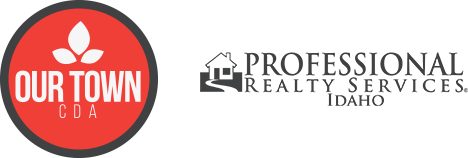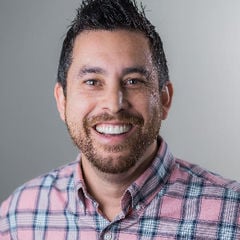Story By Dan Thompson | Article Provided by Coeur d’Alene Living Local
Sean Bonner is quick to call himself a nerd, and during his 15 years living in North Idaho, he has come to realize that he is not alone.
Through the Coeur d’Alene branch of the Innovation Collective, he and other self-avowed nerds have a place to come together and work toward the organization’s mission, which is to create “a global entrepreneurship movement in smaller towns,” nodding to the uniqueness of each town and the skills of each member.
Charles Buck is the associate vice president and executive officer for University of Idaho Coeur d’Alene, and his charge is to increase educational access in the community to foster positive growth and development, not just in Coeur d’Alene but in towns across the state.
So perhaps it was only a matter of time that the efforts of Buck and people like Bonner in the Innovation Collective were able to come together. And come together they have, with a program that is off to a faster start than either of them expected.
With the help of Apple, the University of Idaho and the Innovation Collective have created “Inspire Idaho.” The program’s goal? To help Idahoans learn the skills of coding and mobile app development, all without driving farther than their hometown library or enrolling in university classes.
“We need to find other products that our citizens can understand and really benefit from,” Buck said. “We want to bring something that’s relevant to our communities.”
The need is evident. The tech world is already in need of about 50,000 qualified coders and app writers, Buck said, and that demand isn’t going away. But not everyone is in a position to uproot their families in order to redirect their careers, he said.
In early 2018, Buck ended up in conversations with some representatives from Apple, which, he learned, already had a curriculum to teach people how to code and develop apps—all in about 180 hours of work and study.
In March that year, Buck mustered five teams of U of I and Apple representatives to travel across the state, visiting 20 cities and holding forums to introduce this idea to Idahoans. Buck thought they might get a couple hundred people interested.
Within four days, they had 450 signups. Now they have 348 people enrolled across 11 sites—including Bonners Ferry and Coeur d’Alene—with another 550 people waiting to join teams. A Sandpoint-based group is scheduled to start this fall.
“The key thing about the curriculum that got me excited about going forward is it’s not just learning how to code,” Buck said. “You can go from knowing nothing to a fully developed app if you get through the curriculum, so there’s a real tangible deliverable on the other end.”
Buck and his colleagues at the University of Idaho are doing what they can to ensure a successful experience for those involved in the program. Toward that end, each group has at least one expert or mentor—someone with experience in coding or software development—as a sort of “den mother” to guide enrollees. That’s where the Innovation Collective has leveraged its state-wide reach, enlisting volunteers to fill those roles.
“The volunteers are what’s really impressed me,” Buck said.
The program has also reached out to libraries to offer spaces for the teams to meet and to businesses and municipalities to help eliminate the primary barrier to entry: the need for a Macbook computer to complete the curriculum.
Through grants and donations, some groups have had their computers paid for, while others are able to borrow some through the university’s various branches.
“We’re limited by Macbooks and by experts to get more teams going,” Buck said. “That’s really our main thing right now.”
Groups first launched last summer, so many of them are coming to the end of the program right about now. Bonner has been involved with the group in Bonners Ferry, sometimes through in-person visits but more often by video chat from his home in Post Falls. Every student has been enthusiastic, he said, though not all who started will finish the program.
While Apple’s curriculum is called “Everyone Can Code,” some people pick it up faster than others or are able to devote more time to it. Bonner’s group in Bonners Ferry decided that a pace of four hours per week was a good starting point to get done in a year, but that hasn’t necessarily been a pace everyone has kept up with.
Also, the process of learning to code and then actually writing specific code to build the apps that students are setting out to create is not necessarily a smooth one, Bonner said.
“When people start getting into the actual (digital) playgrounds, they say, ‘Wow this is way more than I thought,’” said Bonner, a software developer. “The program was trying to get people enthusiastic, and some are realizing this isn’t quite what they thought, but the people who are still in now are definitely wanting to finish. … At the root it’s a self-study, so you get out of it what you put into it.”
Bonner believes in the program, though, and said he will continue to work with groups this fall.
“The University of Idaho was founded when all the states were being settled and farmed, and they realized we had all these people who need to be able to do a good job at farming,” Bonner said. “We have a new shift in technology and workforce, and people are doing something now to retool, so the U of I is a good sponsor to get this program started.”
Along with Bonner, Jim Hutten will be a mentor for the Sandpoint team. The group of about 15 will meet at the library on a weekly basis, he said, with the hope that being together will help members troubleshoot and learn together.
“Like any other learning, (we) want to create an environment here where people are inspired, where they can go when they get frustrated but not be on a rigorous training schedule like education is,” Hutten said. “Charles (Buck) has a great vision. We need to change the way people learn and get educated.”
Hutten, as well as others he talks to in Sandpoint, realizes that coding is a skill that’s not going away. Many people, he said, don’t want to leave Sandpoint, but they want a better job and they want to learn the skill on their own time.
This program, then, is a great fit, Hutten said.
“We would like them to get done in 12 months, but if someone falls behind, that’s OK,” Hutten said. “Our goal is, let’s keep going.”


